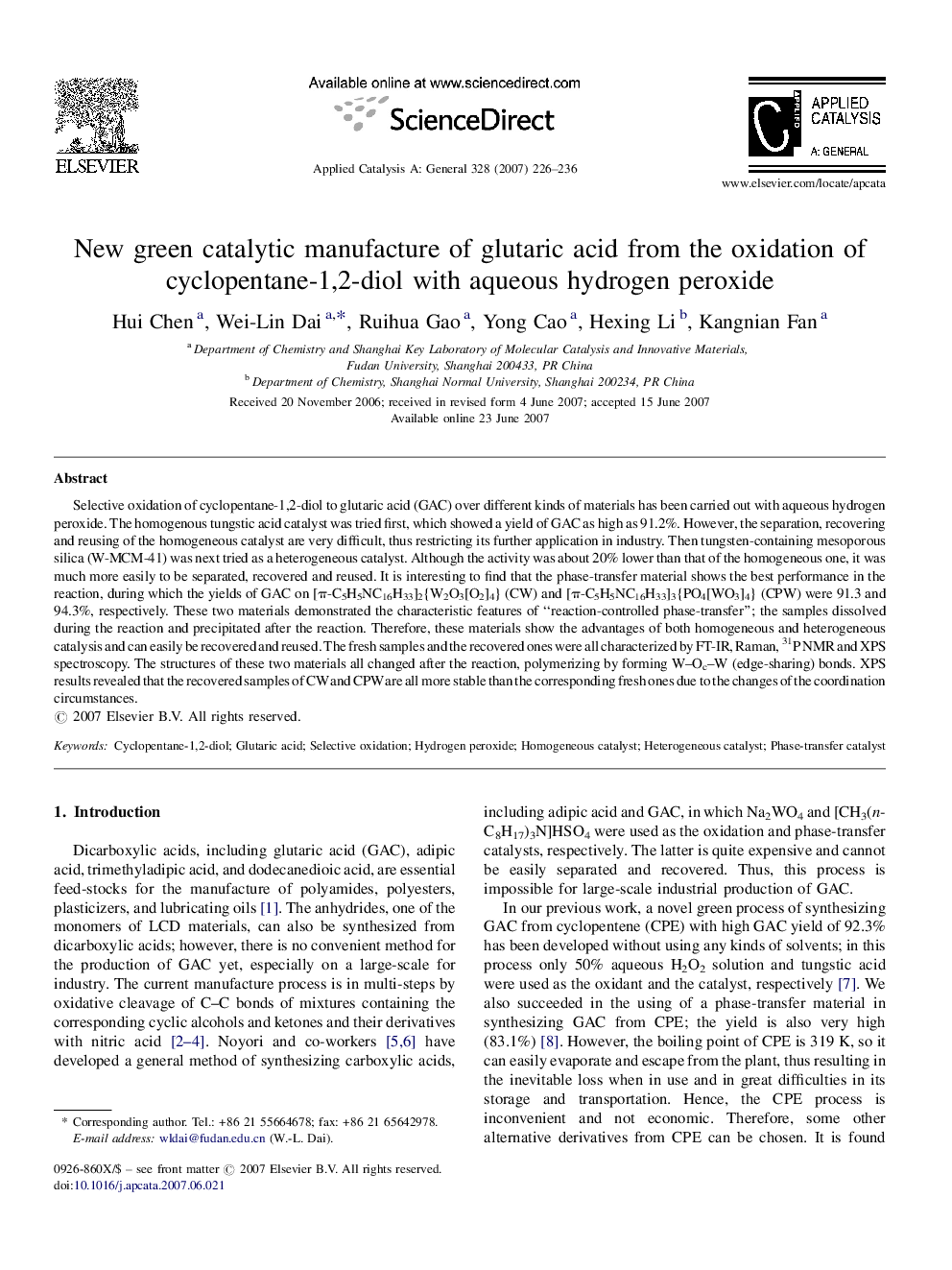| Article ID | Journal | Published Year | Pages | File Type |
|---|---|---|---|---|
| 43553 | Applied Catalysis A: General | 2007 | 11 Pages |
Selective oxidation of cyclopentane-1,2-diol to glutaric acid (GAC) over different kinds of materials has been carried out with aqueous hydrogen peroxide. The homogenous tungstic acid catalyst was tried first, which showed a yield of GAC as high as 91.2%. However, the separation, recovering and reusing of the homogeneous catalyst are very difficult, thus restricting its further application in industry. Then tungsten-containing mesoporous silica (W-MCM-41) was next tried as a heterogeneous catalyst. Although the activity was about 20% lower than that of the homogeneous one, it was much more easily to be separated, recovered and reused. It is interesting to find that the phase-transfer material shows the best performance in the reaction, during which the yields of GAC on [π-C5H5NC16H33]2{W2O3[O2]4} (CW) and [π-C5H5NC16H33]3{PO4[WO3]4} (CPW) were 91.3 and 94.3%, respectively. These two materials demonstrated the characteristic features of “reaction-controlled phase-transfer”; the samples dissolved during the reaction and precipitated after the reaction. Therefore, these materials show the advantages of both homogeneous and heterogeneous catalysis and can easily be recovered and reused. The fresh samples and the recovered ones were all characterized by FT-IR, Raman, 31P NMR and XPS spectroscopy. The structures of these two materials all changed after the reaction, polymerizing by forming W–Oc–W (edge-sharing) bonds. XPS results revealed that the recovered samples of CW and CPW are all more stable than the corresponding fresh ones due to the changes of the coordination circumstances.
Graphical abstractSelective oxidation of cyclopentane-1,2-diol to glutaric acid with aqueous hydrogen peroxide was carried out over different kinds of materials: the homogeneous H2WO4, the heterogeneous W-MCM-41 and the phase-transfer catalysts. The homogeneous and phase-transfer catalysts showed very high activity that the GAC yields were higher than 90% while the heterogeneous and phase-transfer catalysts were convenient to be recovered and reused. Figure optionsDownload full-size imageDownload as PowerPoint slide
